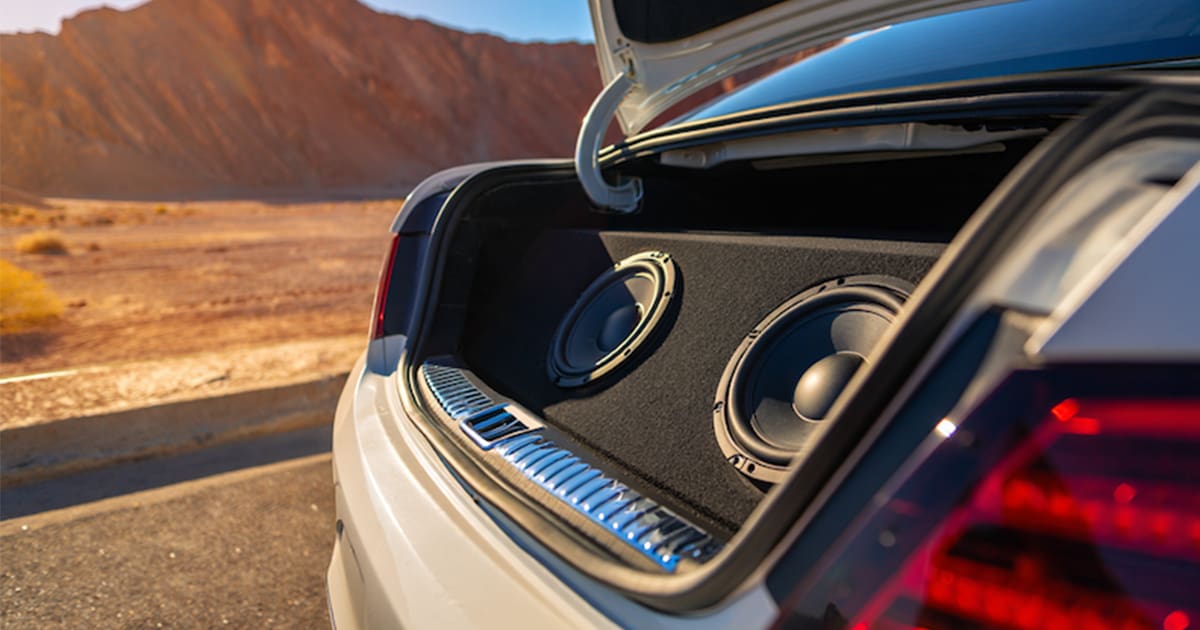A properly powered subwoofer is the foundation of a great car audio system, delivering deep, controlled bass that enhances your listening experience. But if your subwoofer is underpowered, the bass can sound weak, distorted, or even disappear at higher volumes. The issue often comes down to an amplifier that doesn’t provide enough power. Understanding how to properly match an amplifier to your subwoofer ensures the best performance and protects your investment in high-quality audio equipment.
Why an Underpowered Subwoofer Is a Problem
When a subwoofer doesn’t receive enough power, the most obvious symptom is weak or unimpressive bass. You might find that the sound lacks depth or impact, especially when you turn up the volume. In some cases, an underpowered sub may distort or struggle to produce clean low frequencies. Worse, an amplifier that isn’t powerful enough may work harder than it should, generating excessive heat and causing it to shut down unexpectedly.
Many people assume that any amp will work with any subwoofer, but this isn’t the case. Choosing the right amp requires a basic understanding of power ratings, impedance, and system tuning.

Power Ratings: RMS vs. Peak Power
One of the biggest mistakes people make when matching an amp to a sub is focusing on peak power ratings rather than RMS (Root Mean Square) power. Peak power represents short bursts that an amp or subwoofer can handle for brief moments, but it’s not an indicator of sustained performance. RMS power, on the other hand, tells you how much power the subwoofer can handle continuously and how much an amplifier can consistently deliver.
For proper matching, the amplifier’s RMS power output should be close to the subwoofer’s RMS power handling. If the amplifier is too weak, the sub won’t perform at its full potential. If the amp is too powerful, you risk damaging the subwoofer with excessive power.
The Role of Impedance in Power Delivery
Subwoofers are typically available in 2-ohm, 4-ohm, or 8-ohm configurations, which represents how much DC resistance they present to an amplifier. The amplifier’s power output changes depending on the impedance of the subwoofer. For instance, an amplifier may produce 500 watts at 2 ohms but only 250 watts at 4 ohms.
Some subwoofers have dual voice coils (DVC), allowing them to be wired in different configurations to adjust the impedance. A properly matched amplifier and subwoofer ensure that the system operates efficiently without stressing the amp or causing poor performance.

Choosing the Right Amplifier for Your Subwoofer
Selecting an amplifier that matches your subwoofer’s power and impedance is crucial. A mono amplifier is typically the best choice for powering a subwoofer since it is designed specifically for low-frequency reproduction. While multi-channel amplifiers can be bridged to power a sub, mono amps offer greater efficiency and stability for bass applications.
Beyond power and impedance matching, amplifier class is another consideration. Class D amplifiers are the most popular choice for subwoofers due to their efficiency and ability to produce high power with minimal heat. Class AB amplifiers, while known for their sound quality, are less efficient and generate more heat, making them less ideal for driving subs.
Getting the Most Out of Your System with Proper Tuning
Even with a perfectly matched amp and subwoofer, poor system tuning can still result in weak or distorted bass. The input sensitivity, or gain, setting on the amplifier is one of the most misunderstood adjustments. Many people mistakenly treat it as a volume control, but it actually adjusts the amplifier’s input sensitivity to the input signal. Setting the gain too high can introduce distortion, while setting it too low can result in underwhelming bass.
Crossover settings also play a role in performance. A low-pass filter (LPF) ensures that only bass frequencies are sent to the subwoofer, preventing midrange and high frequencies from muddying the sound. Similarly, bass boost controls should be used sparingly, as excessive bass boost can lead to distortion and damage.
For the best results, professional system tuning is highly recommended. A trained installer can adjust the amplifier settings to achieve clean, distortion-free bass that integrates smoothly with the rest of your car’s audio system.

When an Amplifier Upgrade Is Necessary
If your subwoofer still isn’t delivering the bass you expect, even after proper tuning, it may be time to upgrade your amplifier. Signs that your current amp isn’t sufficient include poor bass output even at moderate volume levels, frequent amplifier shutdowns, or excessive distortion.
In some cases, upgrading your vehicle’s electrical system is also necessary, especially if you’re running a powerful amplifier. A high-output alternator, a secondary battery, or an upgraded power wiring setup (commonly referred to as the “Big 3” upgrade) can help supply the necessary current for high-powered systems.
Get the Right Match for the Best Bass
Matching your amplifier to your subwoofer isn’t just about raw power—it’s about ensuring the system works efficiently and delivers clean, impactful bass. The right amplifier will maximize your subwoofer’s performance, prevent damage, and provide a more enjoyable listening experience.
If you’re unsure whether your amplifier is a good match for your subwoofer, a professional mobile enhancement retailer can help. They can assess your system, recommend the best amp for your setup, and fine-tune everything for optimal performance.
Visit a qualified retailer near you to ensure your subwoofer is getting the power it needs for amazing bass performance.

